Xiaomi Mi Band 3 review
If you're looking to buy a new fitness tracker you'll find plenty of options at a variety of different prices, but you'd struggle to find a device that's cheaper than the Xiaomi Mi Band 3.
The Xiaomi Mi Band 2 never managed to top our best cheap fitness tracker list, despite its low price, as it lacks some core features that other budget trackers offer. like an accurate heart rate tracker or a high-quality app experience.
The good news is that the Xiaomi Mi Band 3 is still a cheap device, but it comes with a lot of new features, including waterproofing, a larger screen and an improved design.
So will you be missing out on anything by going for the Band 3 rather than something a bit more expensive? Read on for our full verdict…
Xiaomi Mi Band 3 price and release date
- Worldwide release details is currently unclear, but out in China now
- You can buy it in the UK through an importer, but not in the US or Australia
- Prices start at £23, around $30 / AU$36
Announced in May 2018, the Xiaomi Mi Band 3 isn't easily available globally as many will have hoped. The Chinese pricing is set at 179 yuan for the basic model, which is around £20 / $30 / AU$36.
It's not officially available in the UK or US yet, but you can buy the tracker from Gearbest – which kindly supplied the unit for this review – for £22.76 or $29.99 at the time of writing. Whether Xiaomi will see fit to officially release the tracker around the world is currently unclear.
There's also a more expensive version available in China for 199 yuan (around $33 / £23 / AU$40) but the only extra feature is NFC, and that model isn't currently available from Gearbest in the US and UK.
Design and display
- Light fitness tracker that's comfortable to wear when sweating
- Not the best-looking device, but not ugly either
- Larger screen than the Xiaomi Mi Band 2, but still limited in functionality
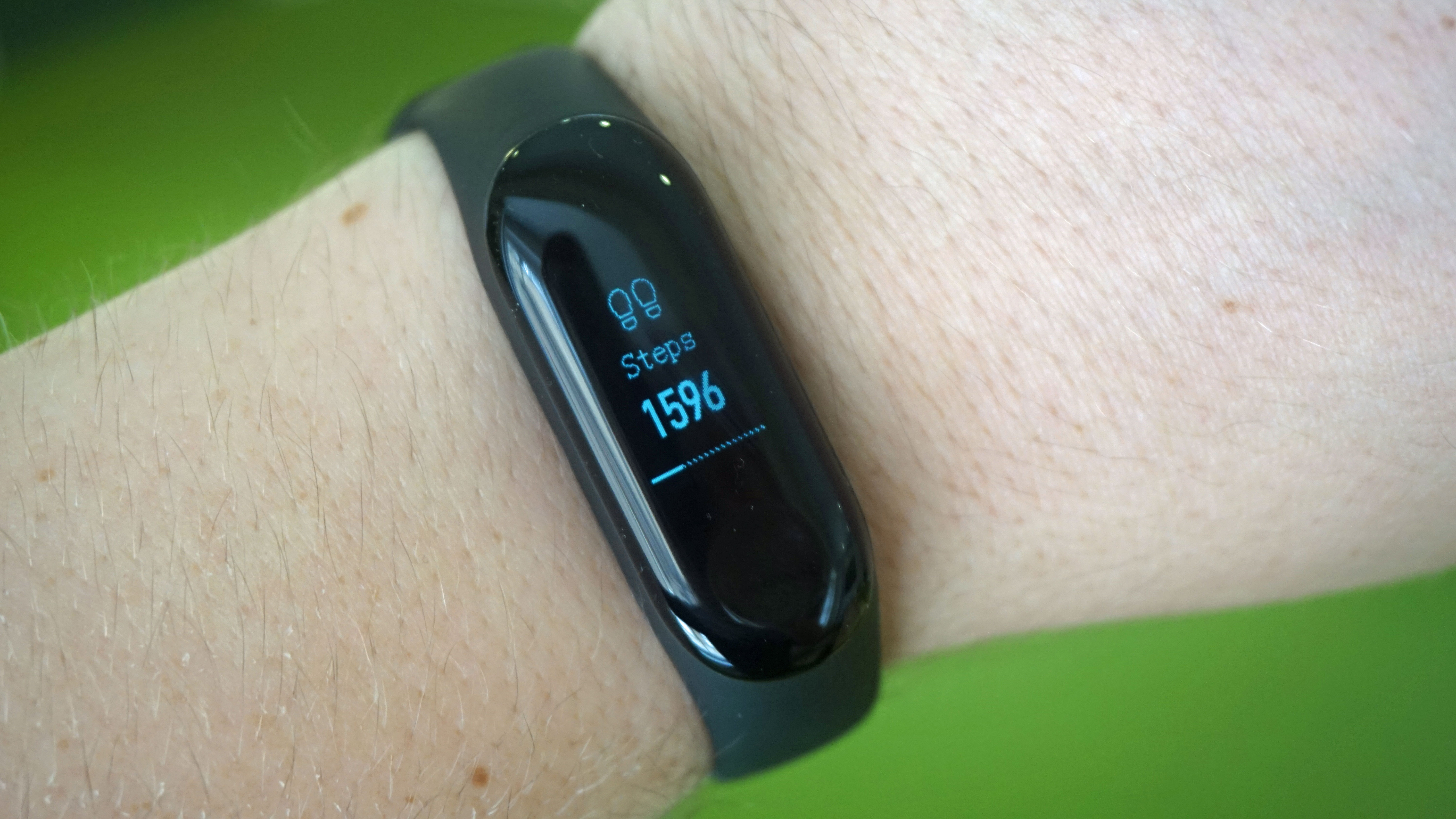
The Xiaomi Mi Band 3 isn't going to floor you with its design, but it does look better than previous fitness trackers from the company.
It's notably light on your wrist at 20g, which means we didn't really notice we were wearing it. The dimensions of the tracker are 17.9 x 46.9 x 12mm, so this won't feel like wearing a smartwatch – it's a lot smaller.
The screen is bigger here than on the Xiaomi Mi Band 2 – it's a 0.78-inch OLED panel that sits lengthways along your wrist. It's a touchscreen, so you can swipe your finger across it to scroll through the menus, although we found that feature quite temperamental.
It often took a few taps or drags on the screen to get into the menus we needed, so this isn't the easiest device to interact with. That issue got better with time as we got used to the device, but we still found ourselves having to swipe or tap repeatedly as the screen wasn't responsive enough.
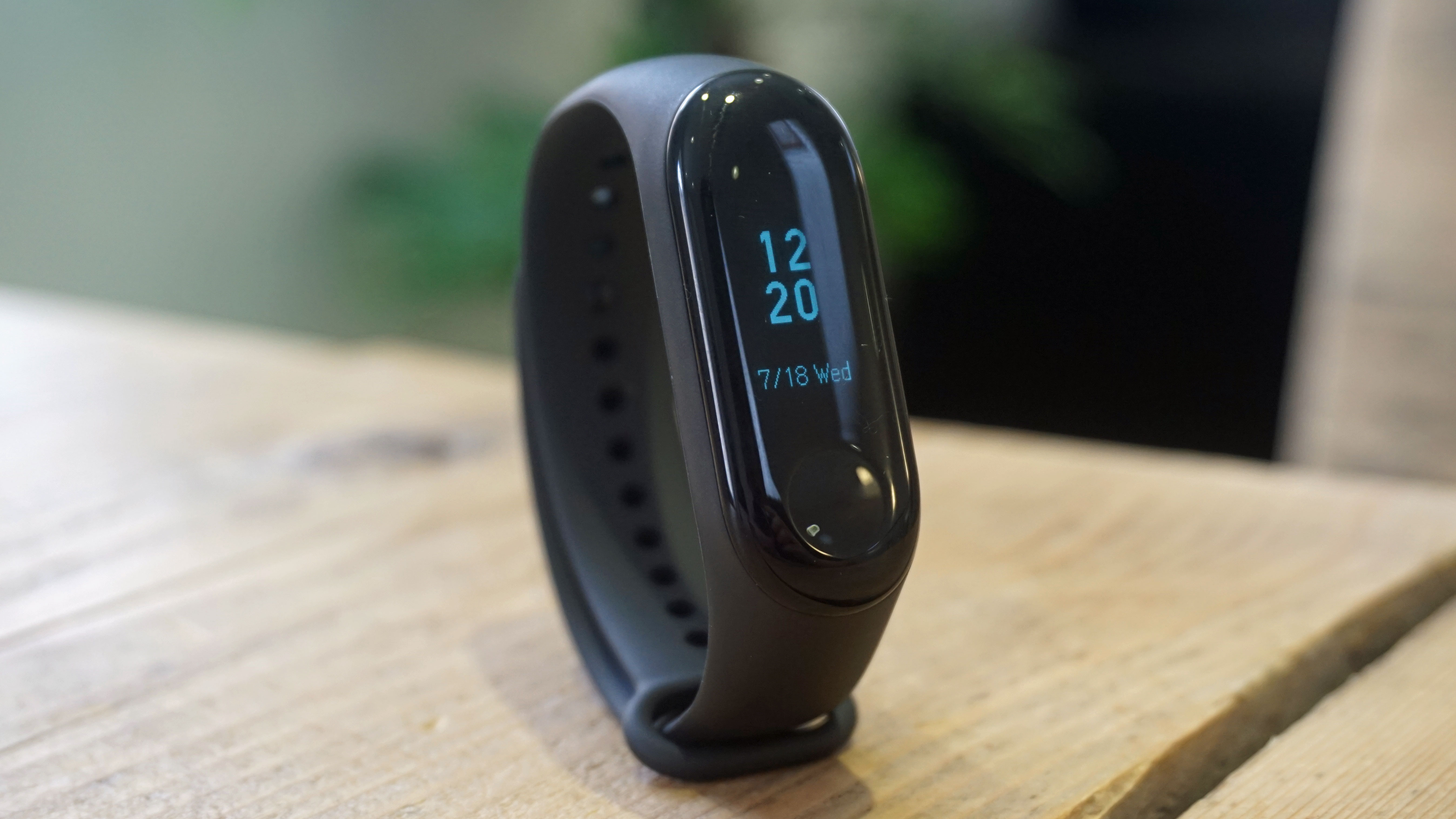
There's a touch key at the bottom of the screen which you can hold down to activate features, or press to go back. This worked quickly whenever we gave it a quick tap when navigating the menus.
The screen itself is black and white, with a faint blue tinge to the white, so you won't be getting a vibrant readout of your stats, but the resolution is good at 128 x 80 pixels. If you want a device that's bolder and can give all of your stats on a large display, you'll want something bigger and more expensive like the Samsung Gear Fit 2 Pro.
Our main problem with the display on the Xiaomi Mi Band 3 is that it's difficult to read in direct sunlight.
We took the tracker out running on a sunny day, and we found it a struggle to read any of our stats without finding a shady spot. That means you may find it difficult to see your information if you need it quickly when you're on the move.
You can take the Xiaomi Mi Band 3 swimming or into the shower, as it's also waterproof to 50 meters – that's a useful feature, and one you won't find in some trackers that cost a good deal more.
You've also got the choice of three different bands for the Mi Band 3: there's a black design – the one pictured in this review – as well as orange and blue.
The strap itself is made of silicone, and we found it comfortable to wear throughout the day – even when sweating – but it doesn't look particularly stylish. Xiaomi doesn't offer any other materials for straps yet, but based on what we saw after the Mi Band 2 was released we'd expect to see a variety of third-party retailers selling alternative straps soon.
Fitness
- Normal step-tracking tech built in
- Heart rate sensor on the rear, which we found temperamental
- No GPS tracking
Step tracking on the Xiaomi Mi Band 3 seemed to be accurate throughout our testing, especially when compared to the results you get from other trackers.
You're never going to get a perfectly accurate result from a wrist-based tracker, but we found it to be in the ballpark for recording our daily step count.
On the rear of the tracker is a heart rate sensor that sits directly on your skin. This isn't always-on, so it won't be constantly recording your heart rate; instead you need to activate it to get a score through to your wrist and have it recorded in the Mi Fit app (the one you'll use on your phone).
We found the heart rate tracker generally worked well when we were sitting still, but we got oddly varying results when out and about. You need to stand still, and perhaps even sit down, to get a totally accurate reading from the tracker.
Needless to say, that's not particularly useful, as you'll often want to record your heart rate when out exercising. Mid-way through a 40-minute run, we tried to record our heart rate while moving and got between 64 or 72 beats per minute, which wasn't anywhere near right.
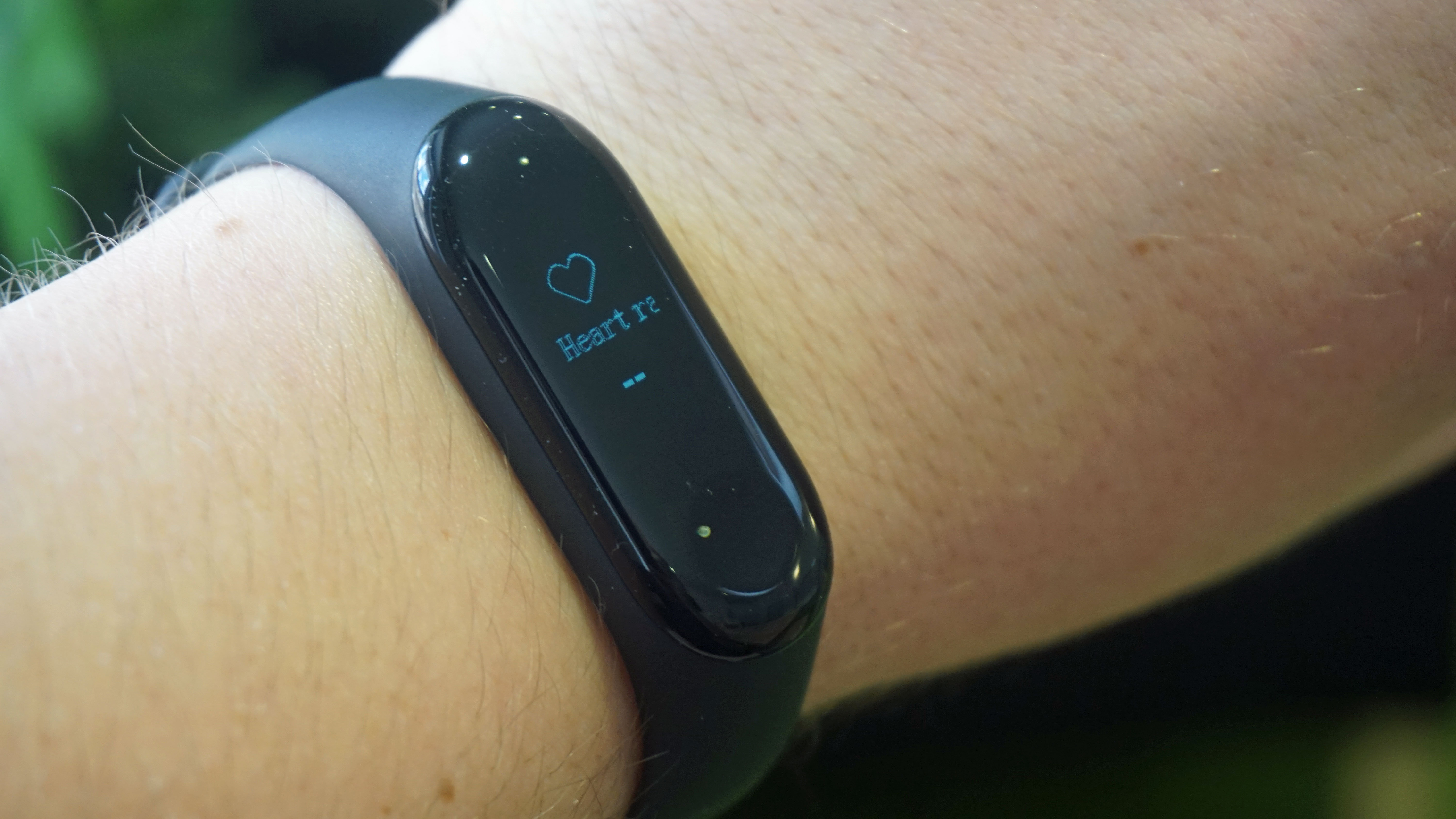
You'll find the tracker will record your distance when you're running too, but don't expect this to be super-accurate as there's no GPS on this device. For casual runners this won't be a huge deal, as you can get okay results from your phone's GPS, but if you want something a bit more specialist you may want to look elsewhere.
The tracker is also designed to track cycling and swimming, but we haven't tested it for either of those activities yet.
One frustration we had with the Mi Band 3 is that you can't start activity tracking from the tracker itself. Instead you'll have to start an activity session from within the app, and then keep it going on the tracker as you exercise.
It would be be more useful to be able to start sessions within the tracker, which is something you can do on a lot of other devices that cost only a little more.
Specs and other features
- Unclear what tech is running inside the tracker
- Sleep tracking tech is limited but useful for basics
- Extra data including weather and notifications
During our testing period we found the Xiaomi Mi Band 3 worked speedily, although we don't know exactly what tech is powering this device.
Xiaomi has yet to share the internal spec for the Mi Band 3, but everything worked well throughout our testing, with the various features firing up quickly.
The Band 3 offers sleep tracking, and thanks to the slim and light design we didn't notice we were still wearing the tracker in bed, even on some warm and uncomfortable evenings.
The sleep stats it records are more limited than on a lot of top-end trackers. It gives you stats for sleep duration, when you've woken up and when you're in deep and light sleep.
It doesn't provide details on your REM, like some top-end Fitbit products or a dedicated tracker like the Nokia Sleep. But if you just want to know how many times you woke up in the night, and get a bit of advice on how to improve your sleeping patterns, the Mi Band 3 will probably suit you.
As mentioned, there's also NFC on another Chinese version of the Xiaomi Mi Band 3, allowing you to use it for contactless payments, but there's currently no word on whether other regions will get that functionality.
Weather information is displayed by default – you'll get the high and low temperatures for the day, and the next couple of days, as well as a brief forecast
You can also have a variety of notifications beamed to your wrist, including calls, texts, alarms, reminders and app notifications from a variety of third-party services.
These are all easy to enable via the app, and while you won't be able to reply from your wrist the Band 3 will give you a quick buzz when you're getting a phone call, for example, so you can take your phone from your pocket to check it.
App and compatiblity
The Mi Band 3 has Bluetooth 4.2 technology inside, and it'll be able to work with phones running Android 4.4 and above, or iPhones running iOS 9.0 and above, once you've downloaded the Mi Fit app to your phone.
We found it easy to set up the app on the Band 3, and it's here that you'll find all of the data you record.
It breaks down the data into days, showing your sleeping pattern, step count, heart rate, weight (if you choose to enter it manually) and more. The interface is easy to use, and it's easy to find and read the stats you need to see.
You can also start your tracking seesions from within the app, and the settings allow you to change exactly how the band works – you can select which apps can send you notifications, whether you want the tracker to vibrate for phone calls and more.
The Mi Fit app does exactly what you need it to, but there's no detailed breakdown of the data to keep you motivated and advise you on what you can do better in the future.
Battery life
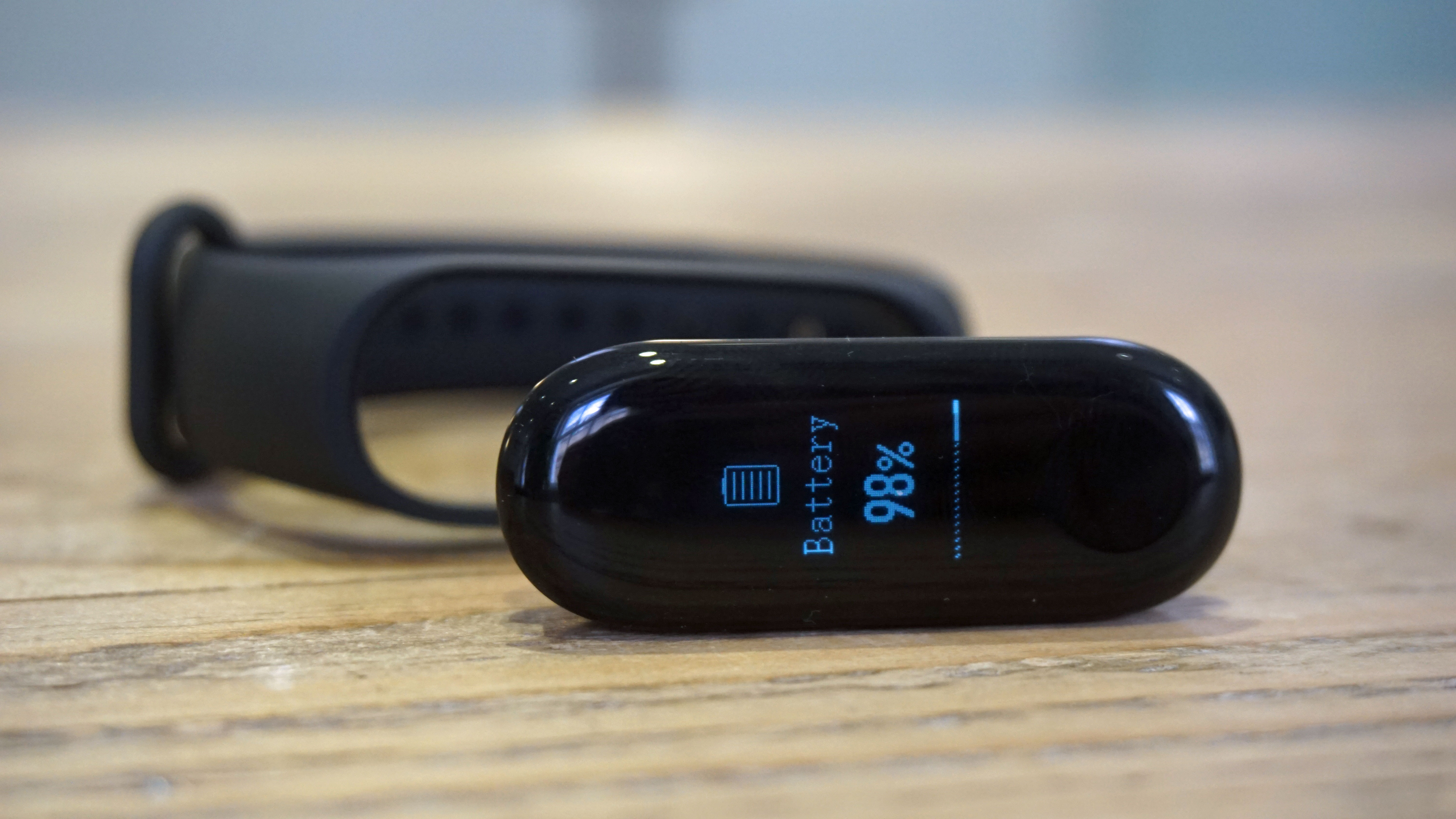
The Xiaomi Mi Band 3 is powered by a 110mAh battery. We used the tracker for two weeks for our final review, and after that period it had 72% battery left.
That was from a full charge with quite extensive usage, so it should easily last for at least a month, and probably closer to six weeks, from a single charge.
Xiaomi claims its band will last for 20 days in standby mode, but we found it lasted longer even when in use, so you won't have to recharge this every night like some fitness trackers.
It's a good job the battery lasts as long as it does, as charging up the Xiaomi Mi Band 3 isn't the easiest thing to do. You have to pop the tracker out of its band and slot it into a proprietary charger, so this won't work with your average micro USB or USB-C cable.
Once that's done, however, it does charge quickly – we found that it went from around 50% to 100% in about half an hour. You won't have to charge the Mi Band 3 that often – but make sure you don't lose the charger, as you won't be able to use the chargers from your other devices.
The Xiaomi Mi Band 3 isn't going to offer a top-end fitness-tracking experience, but if you're looking for a relatively basic device that's attractive, and cheap, it may suit you just fine.
It doesn't weigh down your wrist, and it offers a good range of features that you'll likely be happy with if you're mostly concerned with things like taking a quick look at your daily step count.
And, as with most Xiaomi products, the real highlight is the price.

Who's this for?
The Xiaomi Mi Band 3 is for anyone who's looking to monitor their step count or other basic fitness stats, and who doesn't want to spend lots of money on a device to do those things.
As popular as trackers from the likes of Fitbit and Samsung are, those devices can be expensive, and if you don't mind losing the odd feature in return for a much lower price the Band 3 could be right up your street.
It's also thin, light and comfortable to wear. Some modern trackers can get pretty chunky in order to fit in those extra features and beautifully bold displays, so the Xiaomi is perfectly suited to anyone who wants a smaller device.
Should you buy it?
There are downsides to the Mi Band 3. The temperamental heart rate tracker and distance tracking don't make this a viable alternative to a good GPS-toting running watch.
Only buy this if you just want basic stats like your step count and sleep tracking; you shouldn't be looking to get the Xiaomi Mi Band 3 if you want seriously accurate results that will help you to fine-tune your exercise regime.
But there's nothing wrong with just wanting a basic fitness tracker to keep an eye on your steps, and that's exactly where Xiaomi is pitching this device.
Xiaomi may be overreaching with some of the additional features, but considering that you can keep an eye on your step count for this little money the Xiaomi Mi Band 3 is a pretty remarkable little device.
First reviewed: August 2018
The competition
Don't think the Xiaomi Mi Band 3 is the fitness tracker for you? Below we've listed some alternative devices that may suit you better.
Moov Now

We love the Moov Now as it's affordable and offers some top-end, accurate tracking. Its best feature is its ability to track HIIT workouts, so you can work up a sweat at home with one of Moov's own routines. It'll also track your reps accurately, which is something a lot of other fitness trackers struggle to do.
Read our full Moov Now review
Huawei Band 2 Pro
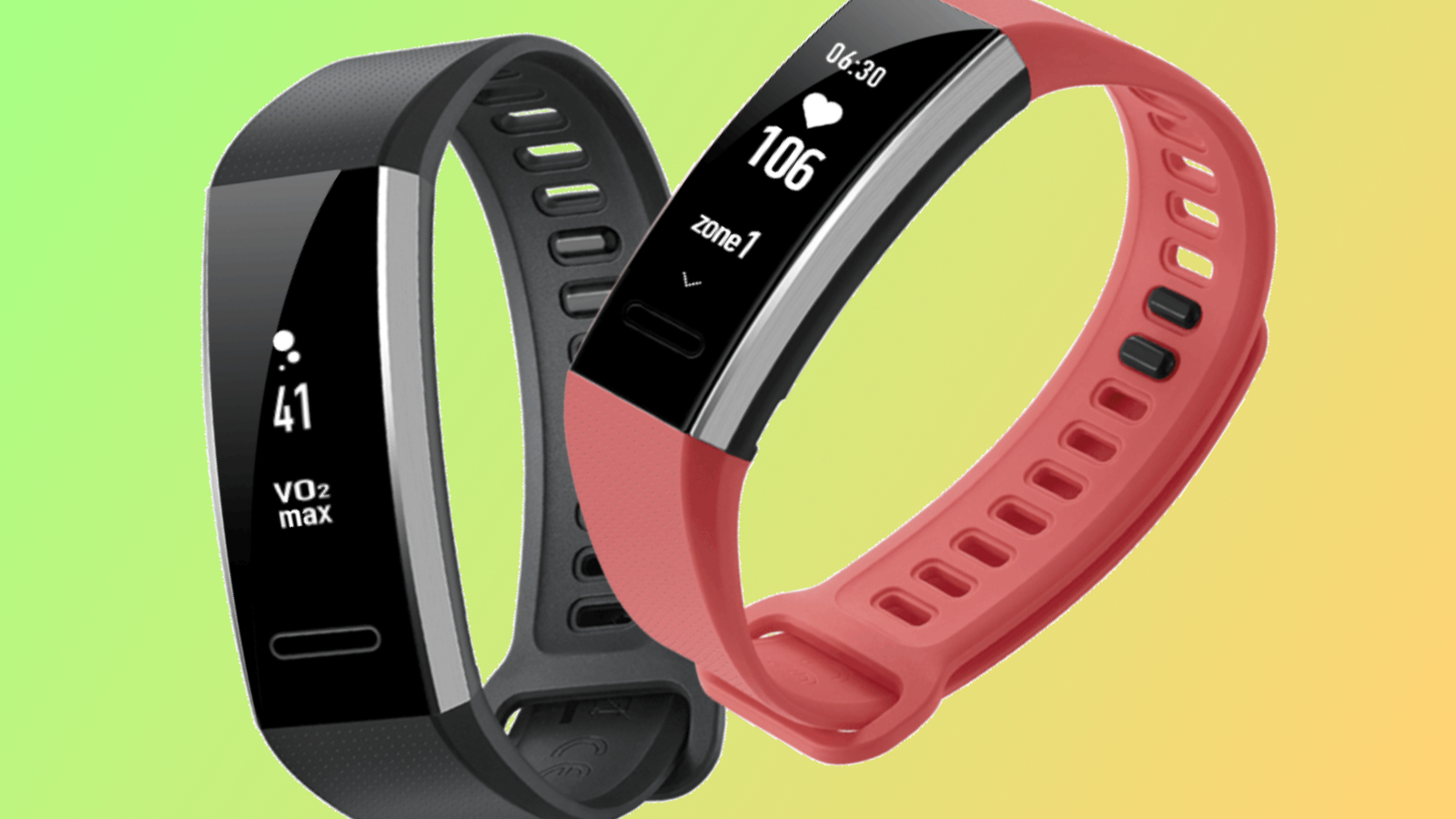
This is another affordable tracker, and comes with a larger display and more comfortable strap than the Xiaomi Mi Band 3. The big highlight here over the Xiaomi are the VO2 Max features, which enable you to monitor the maximum rate of oxygen you can get into your body when you're working out.
Read our full Huawei Band 2 Pro review
Samsung Gear Fit 2 Pro
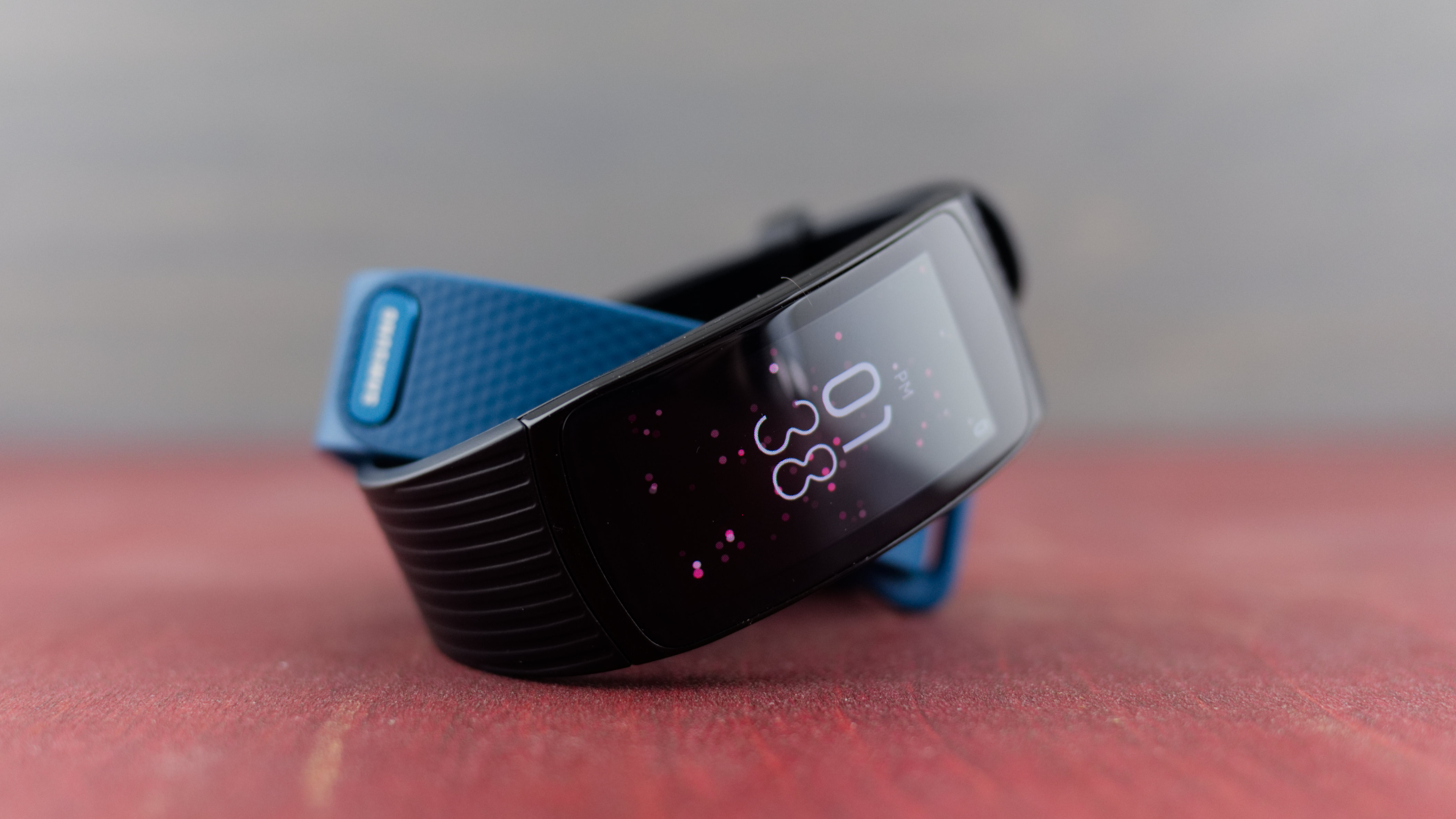
You won't be able to buy the latest Samsung fitness tracker for the same price as the Xiaomi Mi Band 3, but if you want a fuller experience it's the best option to strap around your wrist. There's a full-color AMOLED display, accurate tracking tech and much more.
Read our Samsung Gear Fit 2 Pro review
0 comments:
Post a Comment